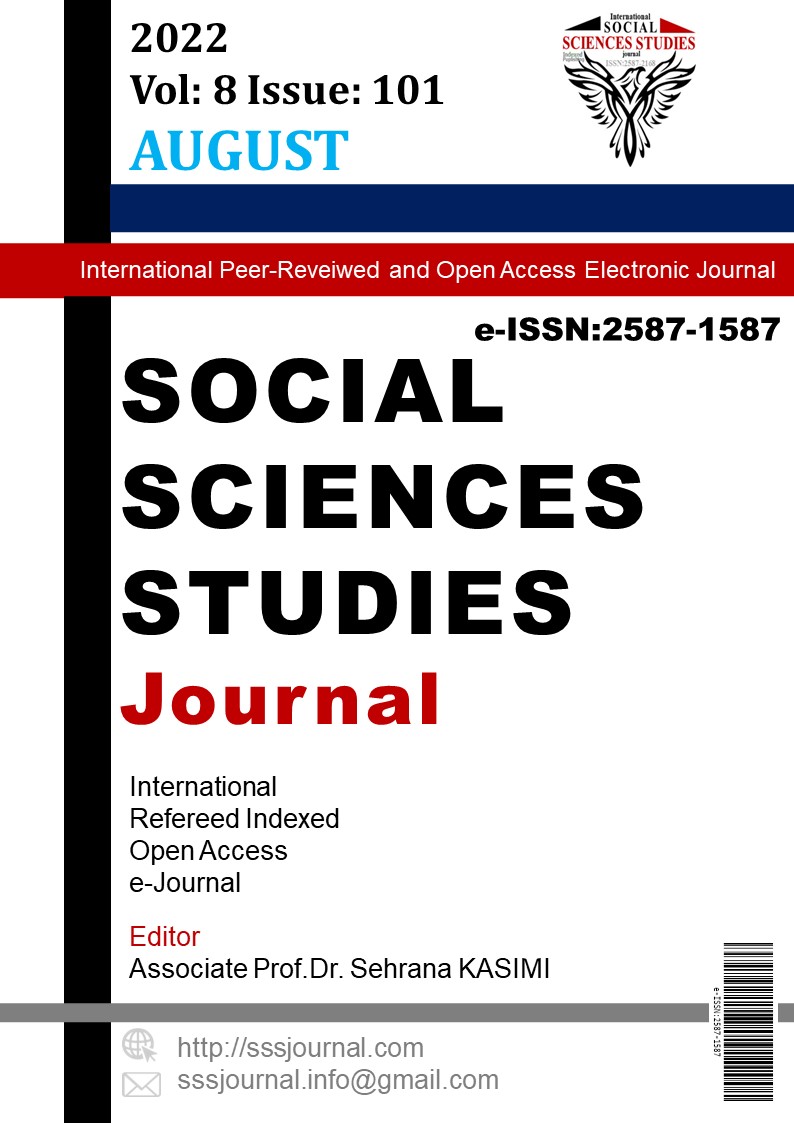Author :
Abstract
İstanbul’un tarihi perspektif içerisinde değerlendirdiğimizde, çok sayıda ilklerin yaşandığı bir şehir olarak karşımıza çıkmaktadır. İstanbul’un İslam kenti kimliği Fatih Sultan Mehmet ile başlamış olup, günümüze kadar devam etmektedir. Kabataş, Beyoğlu ilçesi sınırları içinde Fındıklı ve Dolmabahçe semtleri arasındaki kıyıyı ve yamaçları kapsayan bir semttir. Kabataş limanı da en az semt kadar önemlidir. Bu öneme binaen, Kabataş limanının inşaatını hatırlatmak için bir yüzü limana, diğer yüzü denize bakan “Hadika Taşı” hazırlanmıştır. Hadika, Osmanlıca etrafı ağaçlarla çevrili, sulak bahçe ve bostanlar için kullanılan bir kelimedir. Hadika taşı, büyük ihtimal Sultan Abdülmecid’in kızı Fatma Sultan ile Mustafa Reşit Paşa’nın oğlu Galip Paşa’nın düğünü nedeniyle 1850’de Sultan Abdülmecid tarafından Kabataş rıhtımına dikilmiş bir taştır. Kim tarafından yapıldığı bilinmeyen taş, mermerden dört taşıyıcı sütun ile yapılmış olup, çift taraflı kitabeden oluşmaktadır. Hadika taşını diğer anıtlardan ayıran en önemli unsur ise, yapıldığı dönemde bu mesajların hem denizden hem de karadan rahatlıkla görülebilmesidir. Bu minvalde Hadika taşı, dönemin fonksiyonel özellikleri, teknolojisi, estetiği, iktisadî ve İçtimaî şartlarının birlikte ele alınıp yorumlanarak değerlendirilmesi gerekmektedir.
Keywords
Abstract
When we evaluate Istanbul from a historical perspective, it appears as a city where many firsts were experienced. The identity of the Islamic city of Istanbul started with Fatih Sultan Mehmet and continues until today. Kabataş is a district within the borders of Beyoğlu district, covering the coast and slopes between Fındıklı and Dolmabahçe districts. Kabataş port is just as important as the district. Due to this importance, the "Hadika Stone" was prepared to remind the construction of the Kabataş port, with one side facing the harbor and the other facing the sea. Hadika is an Ottoman word used for wet gardens and orchards surrounded by trees. The Hadika stone is a stone that was erected on the Kabataş dock in 1850 by Sultan Abdülmecid, most likely due to the wedding of Fatma Sultan, the daughter of Sultan Abdülmecid, and Galip Pasha, son of Mustafa Reşit Pasha. The stone, unknown by whom it was made, was made with four carrier columns from marble and consists of a double-sided inscription. The most important element that distinguishes Hadika stone from other monuments is that these messages can be easily seen both from the sea and from the land when it was built. In this respect, Hadika stone should be evaluated and interpreted together with the functional features, technology, aesthetics, economic and social conditions of the period.
Keywords
- 1. Danişmend, İ.H. (1972) İzahlı Osmanlı Tarihi Kronolojisi (1. Baskı). İstanbul: Türkiye Yayınevi.
- 2. Kılıçbay, M.A. (1985). Osmanlı Batılılaşması, Tanzimattan Cumhuriyet’e Türkiye Ansiklopedisi, 1, İstanbul, İletişim Yayınları, 147-151.
- 3. Akyıldız, A. (1993). Tanzimat Dönemi Osmanlı Merkez Teşkilatında Reform, İstanbul: Eren Yayıncılık.
- 4. Batur, A. (1985). Batılılaşma Döneminde Osmanlı Mimarlığı, Tanzimattan Cumhuriyet’e Türkiye Ansiklopedisi, 4, İstanbul, İletişim Yayınları, 1038-1067.
- 5. Batur, S. (1985). Balyan Ailesi, Tanzimattan Cumhuriyet’e Türkiye Ansiklopedisi, 4, İstanbul, İletişim Yayınları, 1089-1090.
- 6. Şahin, Ö. (2013). Sultan 1. Abdülmecid ve Batılılaşma Sürecine Katkıları (1939-1861), Erciyes Üniversitesi, Sosyal Bilimler Enstitüsü, Doktora Tezi.
- 7. Kuban, D. (1998). Kent ve Mimarlık Üzerine İstanbul Yazıları, (1. Baskı). İstanbul: Yem Yayınları
- 8. Hamadeh, S. (2010). Şehr-i Sefa, 18. Yüzyılda İstanbul. (Çeviren: İlknur Güzel). (1. Baskı). İstanbul: İletişim Yayınları.
- 9. Aksoy, Ş. (1977). Kitap Süslemelerinde Türk Barok-Rokoko Üslubu. Sanat, 6, 126-136.
- 10. Ödekan, A. (1993). Ampir Üslubu. Dünden Bugüne İstanbul Ansiklopedisi, 1, 247-249.
- 11. Akıon, N. (1998). 19. Yüzyılın İkinci Yarısında Galata ve Pera, (1. Baskı). İstanbul: Literatür Yayınları.
- 12. Eyice, S. (1965). İstanbul’un Mahalle ve Semt Adları Hakkında Bir Deneme, Türkiyat Mecmuası, 14, 199- 216.
- 13. Cezar, M. (1963). Osmanlı Devrinde İstanbul Yapılarında Tahribat Yapan Yangınlar ve Tabîî Afetler, Türk Sanat Tarihi Araştırmaları, 1, 328-381.
- 14. Kök, S. ve Akpınar, İ. (2019). Bir Tasarım Aracı Olarak Nostalji: Kabataş İskelesi Üzerine Bir Deneme, Universal Journal of History and Culture, 1, 116-134.
- 15. Kuban, D. (1998). Kent ve Mimarlık Üzerine İstanbul Yazıları, (1. Baskı). İstanbul: Yem Yayınları.
- 16. Acımert, M. T. Ve Soygeniş, M. (2017). Kabataş İskelesi Üzerine Bir Parametrik Model Önerisi, A+Arch Design, 3,1, 45-63.
- 17. Göncüoğlu, S.F. (2017). Bir Osmanlı Yerleşimi Olarak Kabataş, Dünden Bugüne Fındıklıdan Tophane’ye, İstanbul: Matsis Matbaa, 80-87.
- 18. Özön, M.N. (1959). Osmanlıca- Türkçe Sözlük, (3.Basım). İstanbul: İnkılap Kitabevi.
- 19. Gülersoy, Ç. (1961). Kabataş, İstanbul Ansiklopedisi, 326.
- 20. Karateke, H.T. (2004). Çok Yaşa, Osmanlı Devleti’nin Son Yüzyılında Merasimler, İstanbul: Kitap Yayınevi.
- 21. Karsan, N.K.N. (2019). Tanzimat’tan Cumhuriyet’e İstanbul’da Osmanlı Anıtları, Marmara Üniversitesi, Güzel Sanatlar Enstitüsü, Yüksek Lisans Tezi, İstanbul.





